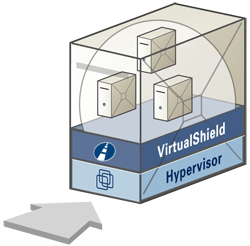This is a cross-post of this blog written by Gregory Ness, former VP of Marketing for Blue Lane Technologies who is currently working for InfoBlox.
In September the discussion started about the concept of Infrastructure 2.0 (or Dynamic Infrastructure) as a response to the rising demands of larger and more complex networks colliding with new IT initiatives including virtualization and cloud computing. I think it caught many by surprise.
A few weeks later a blog entitled The CIO Shell Game made the point that automating systems and endpoints and not the network was merely shifting manual labor demands while increasing network availability and security risks. This theme continued in The Network Industry Needs a New Vision with a focus on the network industry’s overzealous industry focus on speeds and feeds that had ultimately risked making the network irrelevant to computing in the future.
Companies like Cisco, Juniper, F5 Networks, Foundry and Extreme need to invest in automating the rampant manual labor rendering networks static and brittle in the face of more dynamic systems and endpoints. If they do, the cloud computing vision could have a silver lining for those who understand the potential of dynamic infrastructure.
Unleashing dynamic infrastructure will also unleash more powerful business cases for investments in virtualization and cloud computing, which would also impact the fortunes of VMware, Citrix, Microsoft, Google, Amazon and an emerging community of cloud computing startups. I think the word is getting out rapidly.
January 15 is the Launch of the Dynamic Infrastructure Vision
Since then we’ve seen blogs at Cisco and F5’s DevCentral blog join the conversation and recognize how important the network is to these new initiatives. I think, however, the ultimate sign of the arrival of the network as “the foundation for IT automation” meme is a live streaming event being held at the San Jose Fairmont Hotel on January 15.
Infoblox and Cisco are billing dynamic infrastructure as the biggest thing in networking since TCP/IP, because it transforms the brittle, static and manually managed network into an automated network that enables connectivity intelligence between applications, endpoints and networks. That connectivity intelligence establishes feedback loops, the precursor to an explosion of intelligence in the network, applications and endpoints.
Connectivity intelligence could also take the VMotion genie out of the bottle and drive new levels of scale and security and drive the business case for virtualization skyward. Whichever virtualization platform vendor delivers on the promise of enhanced security with VMotion will win.
Recently a second Cisco speaker has agreed to speak at the breakfast event, alongside Cisco Senior Director Douglas Gourlay and Infoblox CTO and Founder Stuart Bailey and moderator (Infoblox) VP Marketing Richard Kagan.
In May the Dynamic Infrastructure panel at the Future In Review (FIRE) conference in San Diego will also include a VP from F5 Networks among others.
I think these two events will set the stage for a much-needed, broader discussion about the collision between static networks and dynamic systems and endpoints; as well as the drive to automate greater portions of the network in response to increasing velocities of change enabled by increased system and endpoint automation.
You can follow my comments in real time at www.twitter.com/archimedius. You can also read more about dynamic infrastructure in the latest issue of bloxNews (which contains several third party perspectives) and the new Infrastructure 2.0 blog launched last week.
My disclaimer is at: http://gregness.wordpress.com/about/. I am a Senior Director at Infoblox.

